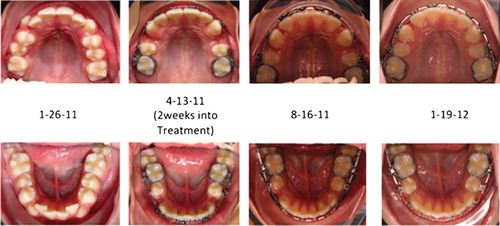It is a privilege to sit on the editorial board of the Journal of Orthodontics and to write this guest editorial. My first publication in this journal was an essay submission for the Chapman Prize in 2002.Citation1 How time moves on and a decade has now passed us by!
Ten years ago, evidence-based orthodontic research was becoming a more important issue within our specialty. Since then, there have been multiple clinical trials, systematic reviews and meta-analyses published on many different aspects of clinical orthodontics. However, how has the landscape in which we practice changed today? I have had the opportunity to practice in three continents during the last decade, all with different health care models. In the USA, orthodontists have increasingly had to rely on marketing tools and creative financing plans in order to attract the patient into their practice. In addition, the global economic crisis of the past 5 years has meant that universities are also faced with shrinking budgets and national research foundations have had to become more prudent with their funding choices.
One recent trend has been the increasing influence of manufacturers in driving the orthodontic product. I have experienced at first hand some manufacturer user meetings that are often better attended than the scientific conferences! This influence is now beginning to extend beyond the clinician, with manufacturers not only directing patients to their orthodontic product but also to their selected orthodontic practitioners. The ‘select’ or ‘premium’ provider of an appliance is now being represented as the gold standard.
Make no mistake, the central reason why orthodontics exist, is the demand for our expertise by the patient. The focus of every good practicing orthodontic specialist should be to provide the highest standard of care and an excellent service. What is the best practice of care? I would argue that the continued use of science and technology should be centralized themes. Here is an example. With advancement in three-dimensional technologies, orthodontists can exploit with proper justification, the use of the three dimensional virtual patient.Citation2 Every effort should be made to produce effective and efficient outcomes for each individual patient. Why does a practitioner need to proceed with a pre-adjusted appliance to align and level every single tooth in the arch if some of the teeth are already in the correct position? Is there not a more efficient way to move these teeth orthodontically than to flare them first and then to retract them into their final position? Why can we not design our dental arch forms based upon the patient’s individual dentoalveolar dimensions rather than resorting to preformed arch shapes? Every patient is unique and every treatment plan and execution should also be so.
A further area of interest, in my opinion, is the underlying biology. As we know, the biological parameters of tooth movement are not well understood. However, with staggering advances in our knowledge of genetics and cell signalling pathways, can these be utilized to provide a higher level of care? We have observed that tooth movement is accelerated in patients during the post-surgical phase following orthognathic surgery.Citation3 This phenomenon occurs because of up-regulation in wound healing and the inflammatory processes that are created after the surgical procedure. Is there a way to safely enhance these processes through biotechnology?Citation4–Citation6 Currently, techniques using photo-biomodulation and cyclical forces are showing interesting results ().
Figure 1. Completion of alignment, levelling and space closure with fixed appliances following premolar extractions. The treatment time for completion of these stages was 10 months. Photo-biomodulation was applied to the patient 20 minutes every day

Lastly, the education of our specialist trainees in the areas of science and critical thinking must continue. The orthodontists of the future should be equipped with the skill set required to ask the important questions when they are handed the next ‘latest and best’ product to be incorporated into their practice. Curricula should continue to generate original research projects relating to orthodontic science and to challenge our ‘norms’ of the day.
As our specialty moves forward in the next decade, these challenges bring exciting prospects. Those who move wisely with the times will be successful. From a personal stand point, clinical application of the virtual patient coupled with biotechnology will be exciting areas to explore. These have the potential to create individualized patient-centred health-care plans and provide the best possible outcomes. If we strive to keep providing the best care for our patients and to keep them the centre of our attention, what manufacturers produce and claim will remain for us — the small details in the plan.
References
- Kau CH, Durning P, Richmond S, Miotti FA, Harzer W. Extractions as a form of interception in the developing dentition: a randomized controlled trial. J Orthod 2004; 31: 107–14.
- Kau CH. Creation of the virtual patient for the study of facial morphology. Facial Plast Surg Clin N Am 2011; 19: 615–22.
- Profitt WR, Fields HW, Sarver DM. Contemporary Orthodontics, 4th Edn. St Louis, MO: Mosby Elsevier, 2007.
- Kau CH. A radiographic analysis of tooth morphology following the use of a novel cyclical force device in orthodontics. Head Face Med 2011; 9: 7–14.
- Fonseca PD, de Lima FM, Higashi DT, Koyama DF, de Oliveira Toginho Filho D, Dias IF, de Paula Ramos S, Effects of light emitting diode (LED) therapy at 940 nm on inflammatory root resorption in rats. Lasers Med Sci 21 February 2012.
- Uysal T, Ekizer A, Akcay H, Etoz O, Guray E. Resonance frequency analysis of orthodontic miniscrews subjected to light-emitting diode photobiomodulation therapy. Eur J Orthod 2012; 34: 44–51.